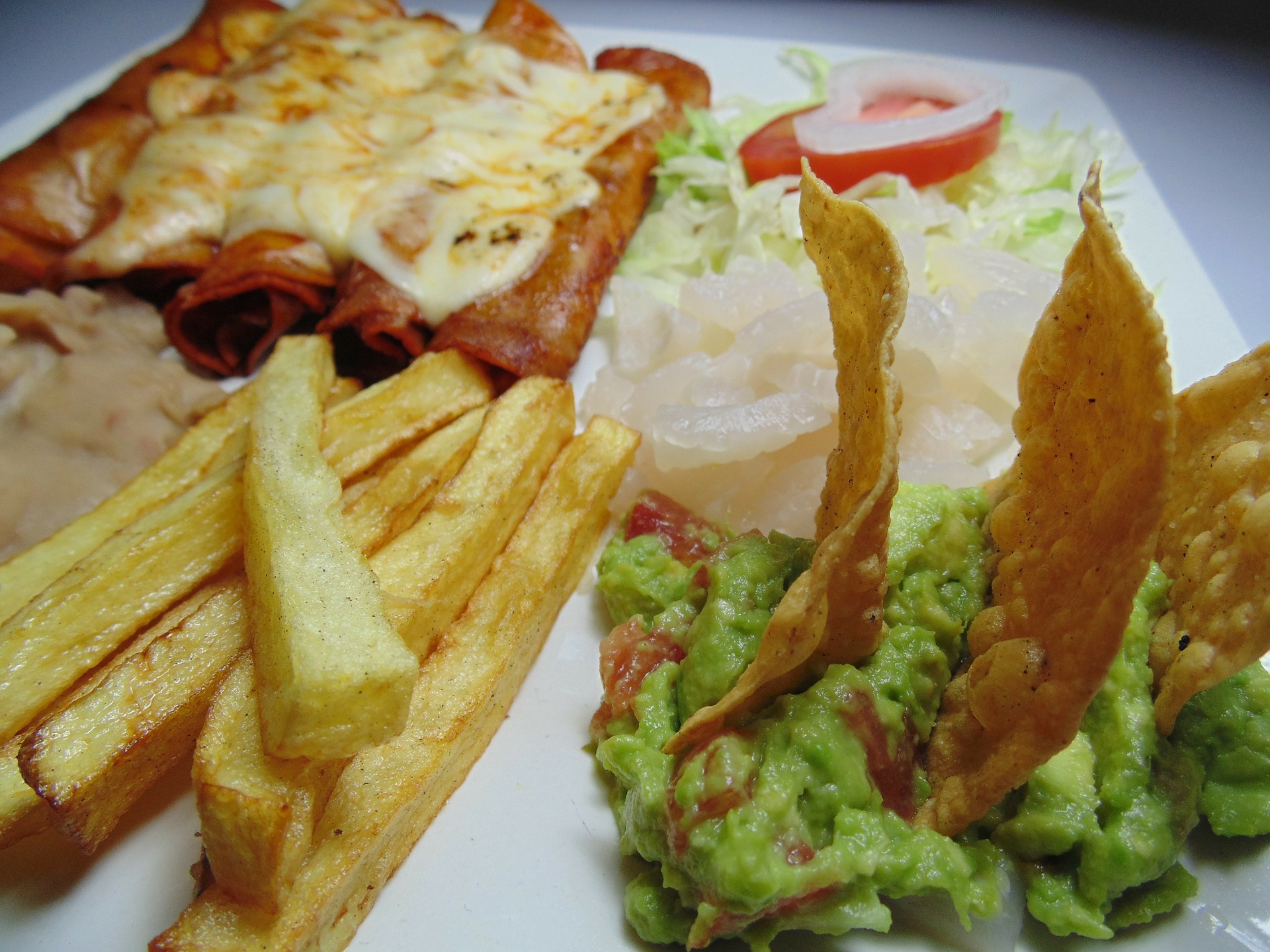Mexican cuisine is associated primarily with spice – we will experience it at every step. Few people know, however, that thanks to it, apart from chili, we can enjoy the taste of cocoa, chocolate and corn all over the world. Food is a reflection of Mexican culture – it’s a huge color palette with a distinctive taste. Come and explore the Mayan country on the tacos, chili con carne or burrito trail.
Mexican cuisine is the heritage of many Indian tribes, in particular the Maya and Aztecs. Today, however, it is also marked by Spanish influences, which is of course conditioned by history. Conquistadors diversified dishes based on exotic fruits, sweet potatoes, nuts, fish and pumpkin with meat (beef and poultry), rice and wine. These ingredients are now popular throughout the country today. Of course, among the indigenous people, old food has survived, such as fried insects (mainly spiders, grasshoppers and ant eggs). Mexico is administratively divided into more than 30 states, but if we were to consider it in culinary terms, we can basically distinguish three regions: northern, central and southern.
North of the country borders the USA and from this neighborhood a kitchen full of extravagance and experiments was born. Its name, tex-mex , clearly indicates the origin. Mexicans from the north had to somehow learn to cope with the harsh climate and limited agrarian possibilities. They mastered the techniques of food storage and processing. The local dishes have always been poorer in ingredients and less expressive in taste than in the south of the country. The lands there have been adapted for the cultivation of cereals, mainly wheat. The dominant t orthille in the north is made of wheat flour, not corn flour, and, like everywhere, stuffed with beef and beans and other vegetables, which gives an unlimited number of combinations – only the ingredients and the chef’s imagination set the limits. You can also try pajeta de membrillo (jelly), crema de queso (cheese soup), machaca con huevos (dried beef with egg) and < strong> gorditas (corn pancakes with cheese, meat and pickled vegetables).
Central Mexican cuisine is a real cultural cocktail in which Indian flavors blend with European ones. The life of the local towns revolves mainly around markets, full of red, juicy tomatoes, a huge amount of bean species, as well as fish and seafood. The rhythm of life in those areas definitely favors the development of street food. The tiny stands are scattered on the sidewalks and tempt with local specialties. When strolling along the streets you will have the opportunity to try dishes such as fried potatoes or perfectly baked grilled ribs.
Mexico from the south borders with the countries of the Caribbean Sea basin and this can also be seen in the local cuisine. Dishes from Oaxaca, Verascruz, Yucatanie or Tabasco abound in seafood, while salads and desserts are dominated by exotic fruits of guanabana and American mameia. Despite common features, individual regions differ from each other. Take Yucatan. It tastes much sweeter than Oaxaca, where in turn spicy dishes dominate. One of the biggest specialties is tamale , i.e. fried corn leaves stuffed with meat or cheese and chili.
What would Mexican cuisine be without its dip sauces, right? The most popular is of course guacamole , i.e. a paste based on avocado and garlic. It is an important ingredient in tacos, it is spread on tortillas. The real rarity is mole poblano . The basis of this rather spicy sauce are almonds, sweet peanuts, cloves, sesame seeds, cinnamon and of course dark chocolate. It is served with chicken, turkey or shrimp. The sweeter version of mole was blessed (thanks to the added bananas) straight from the north of the country is oaxaqueno . We certainly can’t forget about salsa prepared with sweet tomatoes, chili and coriander.


Leave a Reply